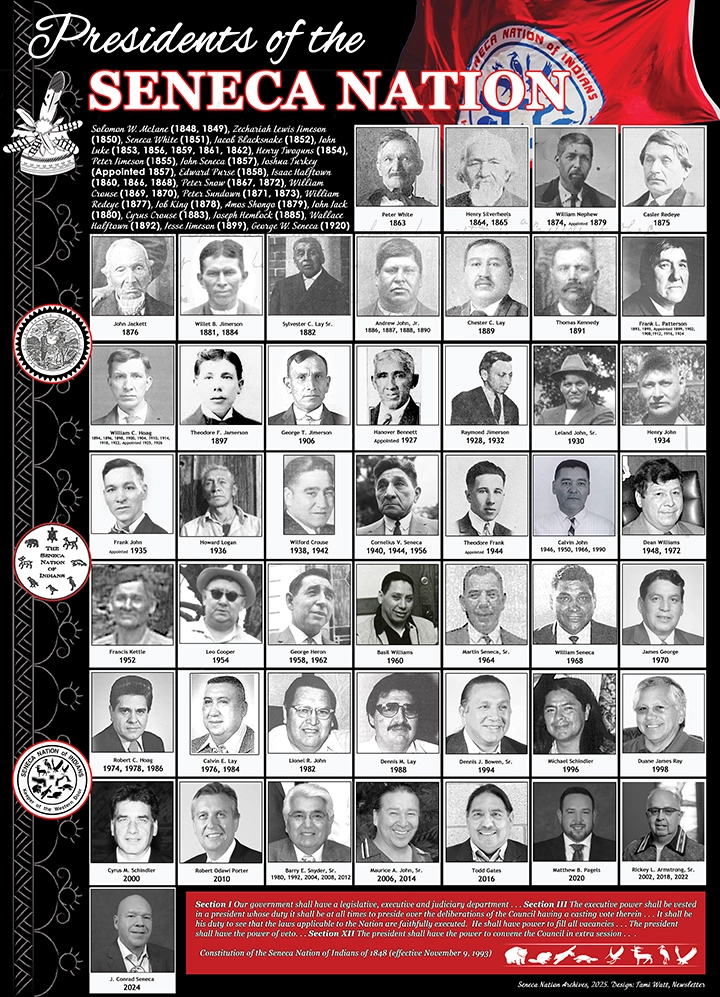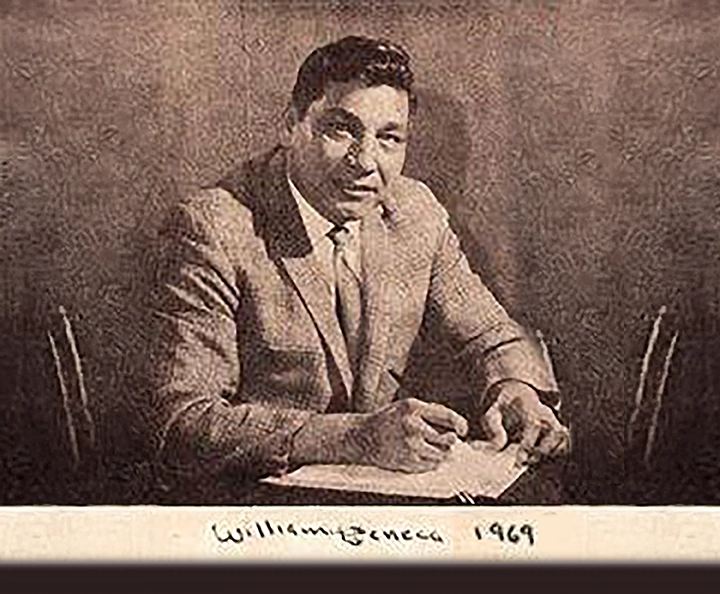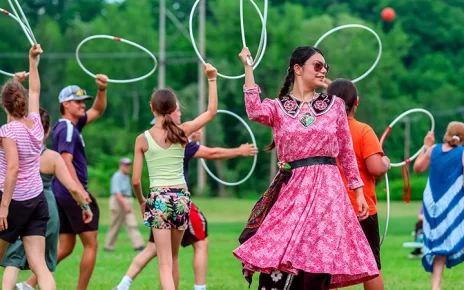William Seneca (1926-1984), June 16th is observed as Seneca Nation President’s Day
William Seneca, son of Nina T. and Jacob Seneca, resided in the Bucktown area of the Cattaraugus Indian Reservation. Born into a family with 13 children, William spent many years at various schools across the Allegany and Cattaraugus territories. He attended the Indian School on the Cattaraugus Territory in the mid-30s, shortly after he attended the Friends Boarding School in Quaker Bridge (also known as Tunesassa Friends School) for his elementary years. He continued on with his education and graduated in 1945 from Gowanda High School. After graduation, Seneca decided to follow in the footsteps of his three older brothers and enlisted in the United States Marine Corps in which he served four years.
After returning home to the Cattaraugus territory, Seneca met and married June Jamison, daughter of Percy and Alberta Jamison in 1949. The couple went on to have three children, Kevin William Seneca, J. Conrad Seneca, and Jill Yvonne Seneca (now Seneca-Raczka).
With a new family started, Seneca knew he had to provide for them and started a career as an ironworker. His ironworking career was cut short in 1957 when he suffered a serious injury on the job during a project at Alfred University. While climbing a steel beam the pins sheared causing him to fall 30 feet along with the beam falling on top of him. His legs were pinned and the accident caused Seneca to shatter his left knee and eventually lose his left leg. The road to recovery after the amputation was a long hard road, but he overcame it.

The injury forced Seneca to take a different career path. He enrolled in Bryant & Stratton Institute in Buffalo New York and earned an Associate Degree in Business Administration in 1963.
From there Seneca began to pursue a political career as an elected official in the Seneca Nation. He was elected Treasurer joining Calvin “Kelly” John, President for the term of 1966-1968. The next term, 1968-1970, Seneca went on to win the Presidency. In 1970, after his term had ended, he was elected as Treasurer once more, though this term would only be served briefly. In early 1971, Seneca was appointed to a post at the United States Department of Interior, Bureau of Indian Affairs (BIA) resigning from his Treasurer position. William Seneca served as the New York Liaison Officer. A year later in 1972 he was assigned to establish the Eastern Area Office of the BIA in Syracuse, NY. Seneca often traveled to Washington D.C. to work for stretches of time. The post was where Seneca remained until his passing on September 20,1984.
During his time in office, William Seneca was known as a progressive and a visionary. His goal was to provide the best opportunities for his community. He advocated for educational reform for Senecas to be successful in both the “Indian World and the White Man’s World”. Seneca was also a strong defender of our sovereignty and honoring our treaties. Seneca gave various speeches across Turtle Island including the National Congress of American Indians, The United and Southeastern Tribes, the Capitol and White House advocating for Indigenous peoples rights and opportunities.
In August of 2010, a re-dedication ceremony took place after renovations of the Seneca administration in Cattaraugus were completed. Again, it was named the William Seneca Building in honor of his life’s work. This President’s Day we pay homage to William Seneca – his life and legacy that live on today.




